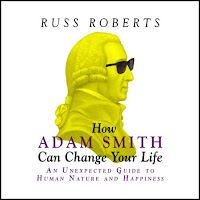In August, while in Rio de Janeiro (Brazil), by chance I came across this exhibition. Visiting this exhibition of Ai Wei Wei's works was one of the highlights of my Brazil visit.
Ai Wei Wei's Background
Wei Wei was born in Beijing in 1957. His father Ai Qing (Jiang Haicheng) was a well known poet who was a communist party member and who had been in jail during 1930s for opposing Kuomintang. When Chairman Mao's cultural revolution started, there was a deep distrust of poets, intellectuals and thinkers and thus Ai Qing was forced to shift to a small rural comune, where his job was to clean the toilets. Wei Wei accompanied his father during 5 years of their stay in this comune.There is a story about Ai Qing, afraid of being labelled "elite", one night burned his poetry and other books, with his son's help. This left a deep impression on Wei Wei's psyche, who was around 9 years old at that time.
Ai Qing was finally rehabilitated in the communist party in 1979. In 1981, Wei Wei went to live in New York, where he lived for 12 years and became an artist. Back in China in 1993, two years later he sparked wide outrage and became famous for his artwork called "Dropping a Hun Dynasty Urn". For making this art installation, Wei Wei dropped and broke into pieces a 2000 years old urn and the whole scene was documented in a series of 3 photographs. Through this installation, Wei Wei denounced the destruction of hundreds of old Chinese temples and buildings along with their ancient treasures during the years of Mao's communist revolution.
In 2006, another art installation of Wei Wei called "Coloured Vases" made news all over the world, when he took 39 Neolithic vases and covered them in industrial paint. With this installation, he wanted to denounce the destruction of world's habitat along with old cultures due to non-stop onslaught of humanity and commercial interests.
Even when not making international news, Wei Wei was continuously challenging the Chinese Government by criticising it through his art. In 2009 he was placed under house arrest and in 2010-11, his new art studio was bull-dozed. Some of his most subversive and dissident art came during these years. Finally in 2015, his first solo exhibition was held at Galleria Continua & Tang Art Centre in Beijing and in July 2015, his passport was given back to him. After his release, he relocated to Berlin (Germany).
Wei Wei's Works from 2009
The Raiz exhibition had two of his works from 2009, before he was placed under the house arrest.The first one is called Porcelain Cube. It has a cube outline made from 1 metre long porcelain cylindrical tubes made according to the traditional Qinghua technique, known for their blue coloured designs. Thus, the cube itself is a negative space.
Wei Wei's Art Works from 2010-2015
These are his works from the years when he was under house arrest and immediately after it.The first one is called the "Sun Flower Seeds" & is from 2010. For this installation, Wei Wei had made millions of porcelain sunflower seeds. Each seed was crafted individually in northern Jiangxi province, an area known for its kilns where they made imperial porcelains. Initially authorities could not understand the meaning of this installation. It was recalling the hero-worship cult of Chairman Mao, who was called the Sun and people were supposed to follow their leader like sunflowers.
The second one is called He Xie or the river crabs and is also from 2010. These represent the destruction of his art studio in Shanghai. When Wie Wie was told that bull-dozers will raze his studio to ground, he organized a He Xie party for his friends for an ironical celebration. The authorities were confused that he was celebrating the imminent destruction. Finally, they decided to place him under house arrest.
Conclusions
Through these installations, Wei Wei hits us with a killer punch forcing us to think not only of the years of destruction during the cultural revolution in China. It also forces us to think of millions of persons killed in the Holocaust by the Nazi regime or by ideologues running totalitarian regimes in China and Cambodia. It is a reminder of the destruction done by radical Islamists and by the so-called "forces of Liberty" - the Bamayan Buddha statue, and ancient ruins in cities like Mosul, Nimrud and Palmyra in Afghanistan, Iraq, Syria and Libya.
I am concluding this post with an art work of Wei Wei from 2015 - it is a wallpaper called "The animal that looks like a Llama but is really an Alpaca". The title of this artwork refers to the optical illusion. On a first glance, the wallpaper looks composed of geometric designs. A closer look shows you that it is made of elements like surveillance cameras, handcuffs, twitter birds and alpacas, each a representation of his struggles with the Chinese authorities and symbols of the Chinese society. Hanging on the wall, you can also see this 2009 work called the Hanging Man.















































